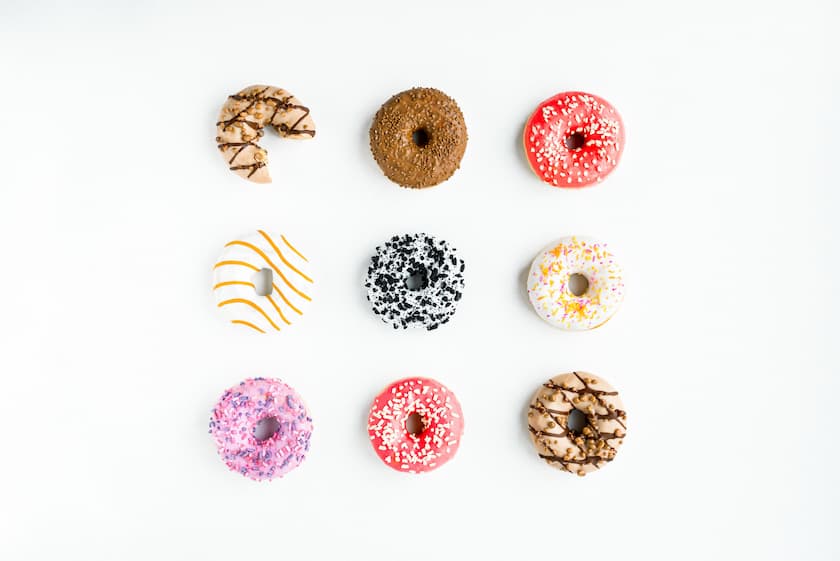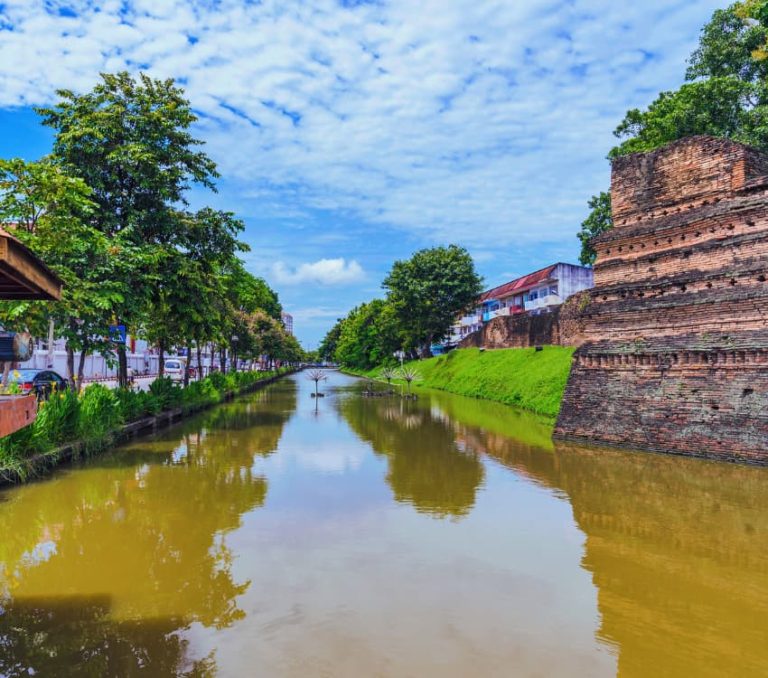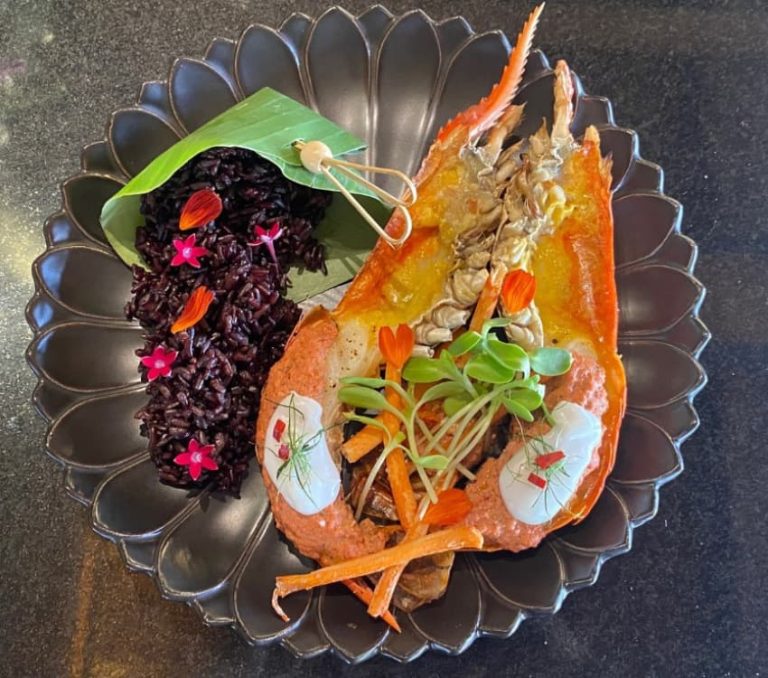Many people wrongly assume that being diagnosed with, or trying to reduce the risk of, Type 2 Diabetes (T2D) means a life with no carbohydrates (carbs). The truth is, not everyone’s body reacts to carbs the same way and, with a bit of mindfulness, you can continue to eat some carbs while maintaining a safe level of blood glucose (blood sugar).
In a prior article we explained that T2D means the body cannot properly manage the amount of ‘sugar’ in the bloodstream, either because the pancreas cannot produce enough of the hormone insulin, or because the body isn’t able to use insulin efficiently (insulin resistance). This results in too much ‘sugar’ remaining in the blood rather than being used by the body as energy.
One way to help manage blood sugar levels is to stop (or reduce) consuming added sugars such as:
- in coffee & tea
- on Pad Thai
- snacks and desserts
Perhaps less obvious, but equally important, is to manage the type and volume of carbs consumed.
What exactly are carbs and how can they be managed?
There are three types of carbs: sugars, starches and fibre.
Sugars and starches raise your blood sugar; fibre does not.
SUGARS
These ‘simple’ carbs are quickly available in the bloodstream. There are several types of sugar, and many names, but the two primary groupings are:
- natural sugars: in foods like fruit and milk
- added sugars: in processed foods like bread, cookies, sodas and many packaged foods
Start reading food labels and you will be shocked at how much sugar is added in soups, sauces, crackers and breads just to name a few. At the end of this article is a list of the common names and ‘varieties’ of sugar to help you understand what you’re looking for as you read labels.
Note: A natural sugar could also be an added sugar; many packaged foods will advertise ‘natural cane sugar’ or sweetened with fructose from real fruits but there is a BIG difference in the fructose consumed while eating an apple versus eating a processed food that is sweetened with fructose or, even worse, the high fructose syrup in soft drinks.
Quick Fact: Sugar accelerates the ageing process, suppresses the immune system and can lead to chromium deficiency (chromium is a mineral that helps regulate blood sugar; deficiency increases chances of developing pre-diabetes).
STARCHES
These ‘complex’ carbs take longer to be digested and work their way into the bloodstream. Common starches include:
- Grains: wheat, barley, oats, and rice
- Starchy Vegetables: corn, potatoes and winter squash
- Beans & Legumes: lentils, pea pods and beans such as lima, pinto & kidney
Be mindful of starchy veggies like corn and potatoes, how you cook them can drastically impact how quickly they raise blood-sugar levels. Best options:
- Baked
- Grilled
- Roasted
- Steamed
For grains, there is conflicting guidance as to whether or not they are beneficial in managing T2D:
- “… participants who consumed the most whole grains had a 29 percent lower rate of type 2 diabetes, compared with participants who ate the fewest whole grains.”
- “If you want to prevent or treat diabetes type 2, it may be more efficient to avoid some of our modern foods than to count calories or carbohydrates.”
Some experts even advocate for avoiding grains altogether, regardless of whether or not you have T2D. So grain consumption is going to be a personal choice based upon your blood-sugar levels and how you feel with, or without, a modest amount of grain in your diet.
Note: As rice is a staple food in many countries, and there are numerous varieties, it is important to understand how the different varietals impact blood sugar.
- If it’s white and / or sticky, avoid it! Short-grain, white (including Jasmine), sticky and glutinous rice have high Glycemic Index (GI) and Glycemic Lode (GL) which is bad for T2D.
- Wholegrain Basmati and Riceberry are both medium GI; enjoy these occasionally.
- The best choices are wholegrain, non-sticky rices such as black (Khao Hom Nil), purple and red rices as they generally have lower GI scores AND more fibre, thereby reducing the negative impact on blood-sugar. That said, if you have T2D, eat these rice varieties in moderation.
You can also try replacing rice with low GI grains such as barley, bulgar, quinoa and millet.
FIBRE
The ‘good’ carbs, fibre is the indigestible part of plant food that helps us feel full and keeps our digestive system clean and healthy. There is no fibre in animal products, hence the need to consume a balanced diet.
Fibre is essential if you have T2D; it slows the absorption of sugars and lowers blood sugar levels.
What is the Glycemic Index (GI)
The Glycemic Index (GI) compares the effect on blood sugar levels of a specific quantity of food and the same quantity of pure glucose (sugar). A food with a GI of 15 raises blood sugar only 15% as much as pure glucose while a food with a GI of 90 will impact your blood sugar nearly the same as pure glucose.
While GI indicates how quickly a food will increase blood sugar it does not measure the volume of glucose that will end up in your bloodstream. The amount of carbs eaten has a greater impact on blood sugar levels than GI alone. For example, a high GI food might have less of an impact than a lower GI food.
- Watermelon has a high GI but is low in total carbs
- Pasta has a medium GI but is higher in carbs
- Therefore, the same portion size of pasta will have a greater impact on total blood glucose levels than watermelon.
Carbs, GI, portion size – where to focus?
Given the above example, the GI index is clearly one tool but not the only tool for evaluating food choices. Consider the GI score along with portion size, carb content and the overall nutritional value of a food. After-all, junk food with a low GI is still junk food!
Balancing portion size and food types correctly should provide a full but not ‘stuffed’ feeling. If still hungry after a meal; try waiting 5 – 10 minutes and sip water to let the feeling of fullness settle in.
While it’s not practical for most people to precisely measure out their foods, there are simple methods to help you get the right balance and portions to avoid overeating.
- portion snacks: don’t eat out of a bag or container; even for healthy snacks like unsalted nuts
- read labels: remember the listed serving size may be larger than your desired portion size
The Plate Method can be used anywhere and divides your plate into the following portions:
- One-half: non-starchy vegetables i.e. leafy greens, broccoli, green beans or carrots
- One-quarter: carbs i.e. whole-grains, fruit, starchy vegetables (corn or potatoes) and dairy
- One-quarter: protein-rich foods i.e. beans / legumes, tofu, eggs, fish or lean meats (chicken / turkey)
Choose water or a low-calorie drink (i.e. unsweetened iced or hot tea) to go with your meal.
Regarding food types, here is a quick reference of what to eat more of and what to avoid:
AVOID
(reduce)
- saturated fat
- deep fried
- salt
- added sugars
- processed foods (white bread, sugary snacks, margarine, meats like hotdogs or baloney, and most breakfast cereals)
Any food that is shelf stable for a long time, or white (flour / sugar), is processed, possibly full of preservatives and not a wholesome food. The exception to this would be nuts and oats.
MORE
- whole fruits (not juice!)
- veggies, legumes / beans
- whole-grains (black rice, whole-wheat, barley, etc.)
- minimally processed foods such as oats, nuts and seeds (not salted or fried)
- oily fish (salmon or mackerel)
- lean meats (chicken, turkey w/ no skin)
- dairy products (non sweetened!!!)
Any food that is not shelf stable for a long time is likely minimally processed and, therefore, a more wholesome food.
The juice conundrum
Juice sounds healthy compared to soda but the boxed and bottled juices commonly available are pasteurised and effectively sugar (fructose) water with some degree of natural flavouring.
Freshly prepared juice does have more nutrients but is still loaded with sugar and, even though it is the naturally occurring sugar (fructose), the concentration of sugar without the fibre means that juice will raise blood-sugar levels fairly quickly.
The best option is to avoid juice and eat whole fruits, thereby consuming all the nutrients of the fruit, plus the fibre, which slows the absorption of the fructose and lowers blood sugar levels.
Note: Eating super ripe fruits, like a soft and overly ripe banana, will have a much higher impact on your blood-sugar levels than a just ripened, firm banana.
Quick Fact: High fructose consumption is linked to non-alcoholic liver disease, a significant increase in risk of developing certain cancers, and can lead to increased uric acid levels.
How to get started?!
If managing your diet seems overwhelming, remember that stress is also bad for your blood sugar management so don’t let meal planning create stress!
Instead, escape to one of the Ayurah Wellness Centres so that you can relax, clear your mind and get the support of wellness professionals as you begin your journey to healthier eating.
You don’t need to be a trained chef to change your eating habits, you just need a bit of guidance and support so that the transition is fun, inspirational and, of course, delicious!
Our team of wellness experts and dieticians will help you learn the pros and cons of different food types and cooking methods. We will work with you to create meal plans and guidelines that will be easy and practical to work into your daily routine, ensuring that you are on a sustainable path to better health and happiness!
The Many Names and Types of Sugar
Common Name |
Primary biochemical sugars |
Source |
|
Agave Nectar or Syrup |
Fructose |
several species of agave |
|
Beet Sugar |
Sucrose |
Sugar Beets |
|
Brown Sugar |
Sucrose |
Sugar Cane Sugar Beets |
|
Cane Sugar |
Sucrose |
Sugar Cane |
|
Coconut Sugar (aka Palm Sugar) |
Sucrose Glucose Fructose |
Coconut Palms |
|
Confectioner’s Sugar (aka powdered sugar, is finely ground table sugar) |
Sucrose |
Sugar Cane Sugar Beets |
|
Fructose (aka Fruit Sugar & Levulose) |
Fructose |
Fruit |
|
Honey |
Fructose Glucose Maltose Sucrose |
Bees (floral nectar) |
|
High-Fructose Corn Syrup |
Fructose |
Corn starch |
|
Lactose (aka Milk Sugar) |
Galactose Glucose |
Milk, Whey |
|
Maltose (aka Malt Sugar) |
Glucose |
Malt Malted grains |
|
Maple Syrup |
Sucrose |
Sap of maple trees |
|
Molasses |
Sucrose Fructose Glucose |
Sugar Cane Sugar Beets, various fruits such as Grape, Cherry & Pomegranate |
|
Raw Sugar (aka Turibinado) |
Sucrose |
Sugar Cane Sugar Beets Only slightly less processed than table sugar & not ‘raw’. Honey, Maple Syrup & Palm sugars are more ‘raw’ |
|
Rice Syrup (aka Brown Rice Syrup) |
Maltose |
Rice Starch |
|
Table Sugar |
Sucrose |
Sugar Cane Sugar Beets |
Related Articles
- Ayurah & You; Reversing the Trend of Type 2 Diabetes
- What to Eat & Type 2 Diabetes
- When to Eat & Type 2 Diabetes
- Physical Activity & Type 2 Diabetes
- Foods That Boost the Immune System
AYURAH SPA & WELLNESS CENTRE
33 Moo 5, Khok Kloi,
Takua Thung, Phang Nga
82140 Thailand
T: +66 (0) 76 580 339











